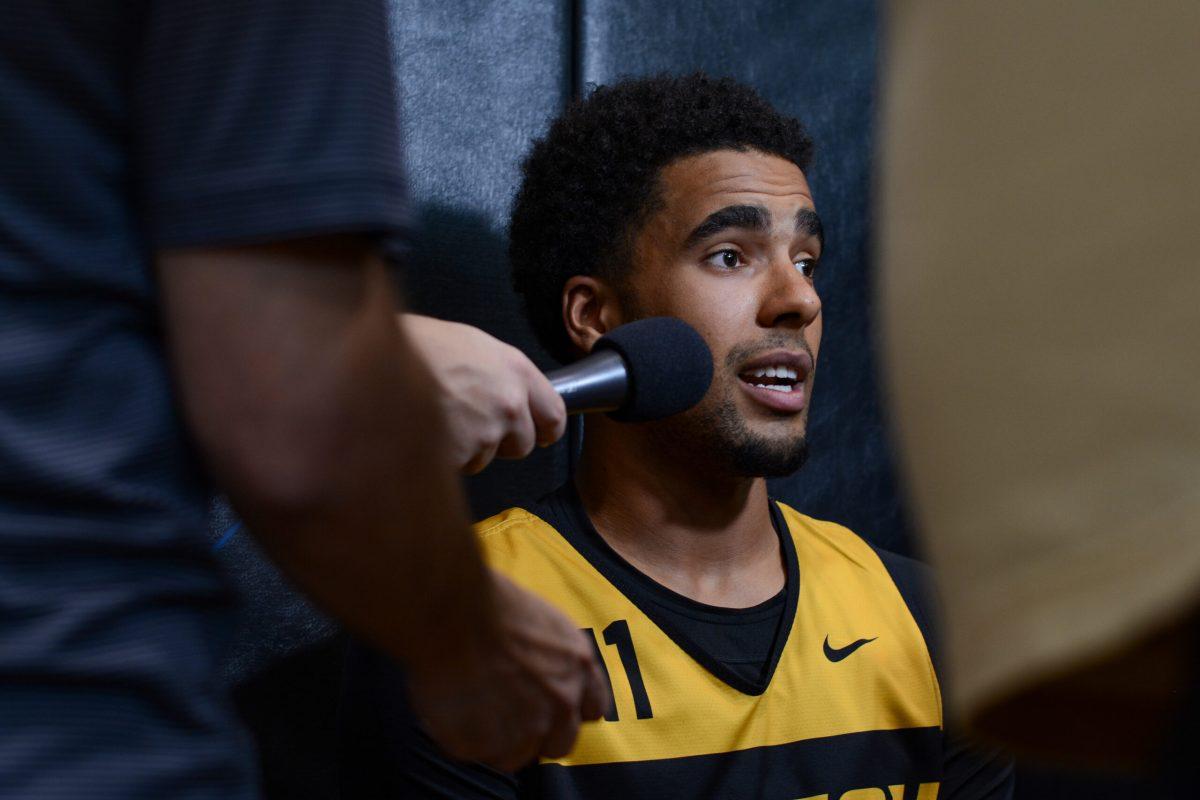
It’s often said that history repeats itself. No word that it would be this quickly. For the second straight year in Mizzou basketball, a Porter is injured in the fall, out for an extended period of time and seemingly submarining what looked like a promising season.
Last year it was Michael Porter Jr. aggravating a back injury. Now it’s his younger brother Jontay tearing his ACL and MCL in a closed scrimmage. What remains to be known is if the parallels will extend to June, when the NBA draft rolls around. Michael declared for the draft as was selected by the Denver Nuggets, exiting Columbia after three games totaling 53 minutes on the court.
Following suit seems likely for Jontay; he declared after last season but pulled out after a tepid response from NBA teams before the draft.
If Porter needs a reason not to go to the NBA after this year, he need not look any further than his own brother, the aforementioned Michael Porter Jr. The older Porter was the number two ranked player in the class of 2017 and a projected top-three pick in the draft. Then the injury came. He never really got the chance to prove himself against elite competition. Scouts didn’t gain any new information. If he had improved since high school, no one in any NBA front offices knew. Nobody had seen him. Draft day came, and the once surefire high pick slid to Denver at number 14.
Jontay is now facing the same situation, but without being a top pick. The 2019 draft is a long way out, but before the injury, ESPN draft expert Jonathan Givony had Porter going at number 13 to the Sacramento Kings. A lost season almost certainly means he won’t be that high, and a draft position is worth a lot more than just pride.
Obviously, it’s impossible to know where Michael would have been drafted had he not been injured, but given projections, it’s safe to say he fell around 10 to 12 spots, from the beginning of the first round to the late lottery. If missing a season causes Jontay to drop similarly, there could be serious financial implications. If he falls 11 spots to number 24 -certainly a reasonable possibility- it would cost him roughly 3.5 million dollars in his rookie contract, not to mention the shorter leash he’ll have if he doesn’t perform right away.
A draft pick is an investment, and that investment is worth more to a franchise the higher up the pick is. If Porter is a top pick, giving him opportunities and chances to prove himself will be a big priority for whichever team he’s on; they won’t be able to afford him not playing to his full potential. If he isn’t picked until later, his development won’t be at the forefront of that team’s mind. If he ends up on a team trying to contend for a playoff spot who isn’t happy with how he plays, he could find himself buried on the bench, forgotten by a team who values winning in the present much more than his growth for the future.
Again, there’s historical precedent for this. In the 2002-03 season, the Detroit Pistons went 50-32, making it to the Eastern Conference Finals. Because of a trade with the Memphis Grizzlies, they also had the number two overall pick, which they used on raw, Serbian center Darko Milicic.
It was clear from the beginning that Milicic wasn’t ready from the NBA. The 18-year-old, while loaded with potential, lacked strength and the overall polish needed to contribute right away. Meanwhile the Pistons, focusing on their needs at the time, relegated him to the end of the bench. Milicic averaged slightly under five minutes per game, never getting the experience he really needed. He bounced around to six teams in parts of ten seasons before exiting the league at age 27. If he had actually landed on a team that needed him and gave him the opportunity to contribute, things might have turned out differently.
Milicic represents the absolute worst case scenario of a top pick, but his situation happens a lot more often towards the bottom of the first round, where Porter will likely end up if he leaves without playing this season. In the last three full seasons, rookies picked between 20 and 25 have averaged only about 12 minutes per game.
Porter’s age represents another factor compelling him to the draft. In theory, he’s more valuable the younger he is, allowing him the most time to improve through his career. The longer he stays in college, the less time he’ll have and the less valuable he’ll be seen by NBA front offices. But the fact that he reclassified from the class of 2018 to 2017 makes him a year younger than most players in his class, so he’ll be the age of an average sophomore next year, his junior season if he stays.This could play to his advantage, combining the youth of a sophomore with the extra year of experience he gets from his reclassification.
For all the reasons to stay because of how it would affect his NBA career and his wallet, the greatest reason for Porter to stay may be less tangible than that. If he puts his NBA ambitions on hold, he’ll be revered on campus. He’ll be known as the player who made the decision to put his career on hold to chase one last shot at glory, not just at his school, but in his hometown. He’ll have kept history from repeating.
_Edited by Bennett Durando | [email protected]_